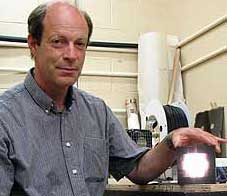Liquid Fiber Displays, a company spun out of research conducted in the faculty of engineering at McMaster University, has combined a uniquely woven optical fibre array with light emitting diodes (LED), and liquid crystal-based light modulation to build a full colour display.
'It’s a significant advancement from current electronic sign technology,' explained Adrian Kitai, a Prof of both engineering physics and materials science and engineering at McMaster, who developed the technology. 'It has higher resolution capability than any other LED screen on the market, high brightness, higher reliability, lower power consumption and can reduce costs by up to four times compared to conventional LED displays.'
To create a digital sign, the four-inch light modules are stacked in square panels of four. Panels are then joined together to form the desired display size. The technology features “invisible tiling” making the lines between tiles less visible. It is suitable for any indoor public space where signage is used such as in airports, shopping malls, convention centres, sports facilities and schools.
A prototype of the technology has been developed and installed at the McMaster University Student Centre (MUSC) in Hamilton. The 13” high x 70” long (480 x 90 pixel) animated electronic sign displays text and graphics and is used to promote campus activities and announcements.

Liquid Fiber Displays is jointly owned by Kitai and two graduate students, Nimesh Bahl and Cristian Nunez, who developed the enterprise through the Xerox Centre for Engineering Entrepreneurship and Innovation at McMaster. The initiative has received an $117,000 award from the National Sciences and Engineering Research Council of Canada (NSERC) Idea-to-Innovation fund to help with commercialisation.
'We’ve proven the technology works and is the best available,' said Bahl. 'No further research is required, just product design and production.'
'We’re looking for the right partnerships to take this technology into the marketplace,' added Nunez.




Nanogenerator consumes CO2 to generate electricity
Whoopee, they've solved how to keep a light on but not a lot else.